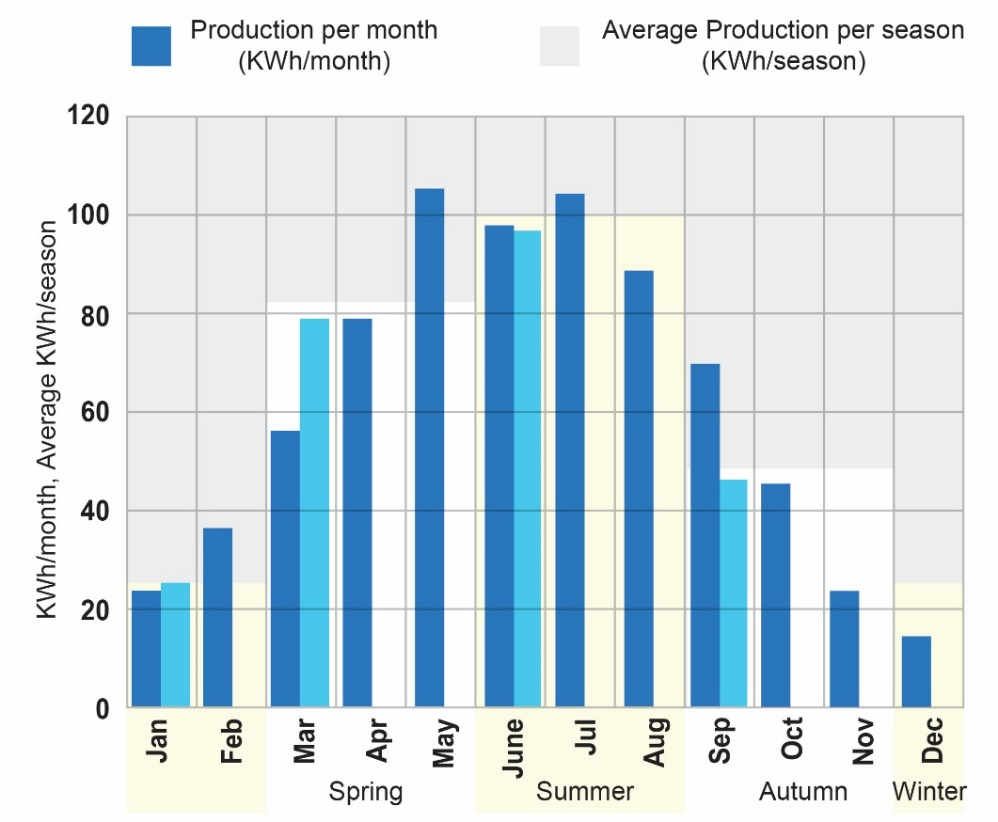Do solar panels generate electricity during cloudy, rainy, or snowy days? What about at night?
- September 10, 2019
- Category: EPEVER
- 1937 views

Do solar panels generate electricity during cloudy, rainy, or snowy days? What about at night?
Standard test condition for solar systems is defined at 25℃ temperature which means that the best performance of photovoltaic systems can be achieved at standard conditions. As it is obvious solar panels need the sunlight to produce energy and highly depend on the sun illumination, but it does not mean that solar systems are out of order in rainy or cloudy days. It is proved that solar panels can provide 10-25% energy of a sunny day on cloudy days; this amount varies from 10% on very cloudy days to 25% during light cloudy days. So we can conclude that solar panels can benefit the sunlight behind the clouds to produce energy and convert it into electricity. Deviation from the standard conditions will affect the efficiency of the photovoltaic system, higher temperatures negatively affect the efficiency of solar systems as well as cloudy and cold climates. Although it is considered that more sunny days and steady illumination by sun rays can produce more energy for solar systems but it is noticed that the solar systems are more efficient in San Francisco than Las Vegas where has a hot and dry climate and the solar panels are illuminated by more sun rays. Figure 1 demonstrates the energy production by solar systems for different months and seasons in the United States which proves the more energy production during summer months.

Figure 1-energy production during a year
The performance of the solar systems during nights or dark mediums is somehow different with cloudy or rainy days. Photovoltaic systems produce the energy during a day and can store the extra amount of solar energy to utilize at nights so solar systems can work at night by the energy storage which is done in sunny hours of the day. The solar systems can produce energy from moonlight, but it can be predicted that this amount of energy will not be enough for a photovoltaic system to perform during the night. Street lights and other light resources can lead to energy production by the solar panels but as mentioned before the amount of energy will not be enough. So solar systems during nights utilize the energy stored by sunlight during sunny hours. It is concluded that the maximum energy production depends on standard temperature and sun availability and deviation from the standards reduces the efficiency of the photovoltaic system but 10-25% energy production during cloudy and rainy conditions can be considered as a prominent feature for renewable energy resources.
Energy production by solar systems in Canada is illustrated in figure 2 as an example. The amount of energy varies from 780kWh/kW/yr to 1384kWh/kW/yr which depends on weather conditions as well as geographical latitude determining the angle of incidence for sun rays. It is also shown that the best month for energy production in Canada is April while December is the worst month. For detail information, you can visit www.energyhub.org/solar-energy-maps-canada/

Figure 2- energy production in different parts of Canada
